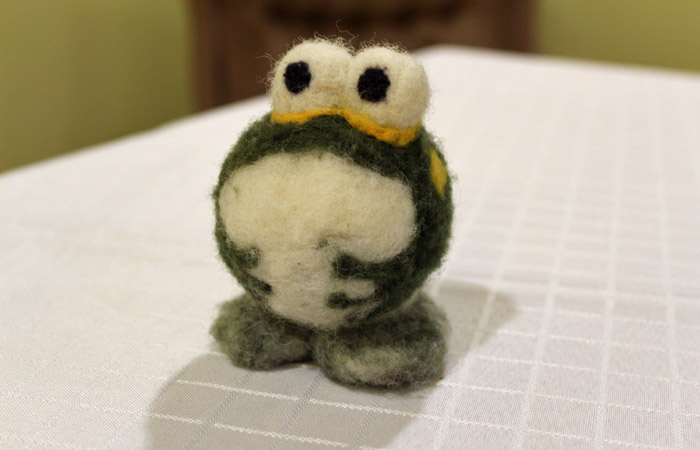People have hand-crafted with wool for centuries. The beautiful aspect about traditional handwork is that you don’t need a ton of special skill and expensive equipment to get started. There are many simple projects you can take on with a few easy-to-find supplies. (YouTube tutorials are helpful too!)
As well as being incredibly relaxing and rewarding, I find working with wool provides rich education on the importance of sustainable materials in products we use every day. I also love to take on the venture with kids who naturally love to work with their hands.
So where to start?
Find some wool
If you are looking for raw fleece, you can probably approach nearly any sheep farm and they may have a fleece for you at minimal cost after their annual shearing day. Not all wool is created equal, so you may want to let them know what project you have in mind so they can choose an appropriate fleece.
Think about the characteristics that you will need for the project you have in mind. For example, are you looking for a coarse or soft yarn? Do you need something with a lot of elasticity and/or durability? Research what specific breed and characteristics the yarn holds and pick accordingly.
Keep in mind, the price of local yarn will not be as low as acrylic or mass-produced wool from another country. You may want to remind yourself that you are purchasing something local, sustainable, and supporting your local economy.
Wash and card
Whatever you end up crafting with the wool, it will most likely need to be washed and carded. (If you are purchasing yarn, this won’t apply.) If you don’t want the bother of cleaning the wool, you might want to consider buying already washed and carded wool from a wool mill or farm that gets it processed for their own use.
Although washing and carding is a time-consuming process, it’s surprisingly easy if you are doing it small scale. Picking out debris can be done by hand. Washing requires a bathtub, washing machine, or what I like best, a large tub outdoors. Dish soap works perfectly for taking out the greasy lanolin. Make sure to follow detailed directions and use the correct temperature of water. Instructions can be found in multiple places online. Washing only requires water, soap and soaking time.
If you aren’t familiar with carding, in short, it means combing the wool. Carding really doesn’t have to take expensive equipment besides a hand carder. I got lucky and found a used carder on my local buy and sell. If you can’t find a used carder, you can purchase them new from various places online. (Etsy has a ton of them.) Hand carding is slow, relaxing work. It may be something you want to do while spending time chatting with friends or family.
Choose your project
Do you know why you’ve always been told not to put wool into a washing machine? It’s because of wool’s natural ability to felt. With water, soap, and agitation, wool can be felted into a thick and durable fabric perfect for scarves, hats, mittens, or even slippers. It’s a fairly easy tactile, hands-on project that is a lot of fun.
Another option, making use of wool’s natural felting tendency, is needle felting. Using a special needle (instead of water and soap, as in wet felting), needle felting sparks creativity and imagination in everyone who tries it. Through needle felting, wool can be formed into beautiful artwork, ornaments or even small figures. When I teach kids to needle-felt, we generally start with keychains or magnets, using a cookie cutter to maintain shape.
Carded wool can be quilted into blankets or used for filling pillows or other items, such as crocheted stuffies.
Wool roving, which is long ropes of carded wool, can be hand-spun into yarn. Once wool becomes yarn, it can be knitted into anything, or even woven into simple tapestry. If you aren’t a knitter, or struggle with agility in your fingers, I suggest trying loom knitting which is easy enough that a beginner can pick it up.
There are so many options, and the great thing is that you can learn to do almost all of them as a beginner, child or even non-experienced crafter.
Educate yourself
Some projects, such as felting, can be learned solely through blogs and online tutorials. Others, such as spinning, may need several lessons or workshops first. When you’ve picked your project, pick your teacher, register for a workshop or join a local crafting group to get started with the support you’ll need.
I’m sure you’ll find the slow process of working with wool rewarding, educational and maybe even therapeutic. I believe it’s time we pick up traditional crafts again, put emphasis and care on the materials we use, and value every single piece we create.




